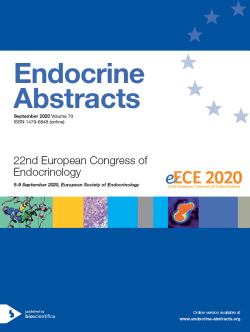Searchable abstracts of presentations at key conferences in endocrinology

22nd European Congress of Endocrinology
Online
05 Sept 2020 - 09 Sept 2020
Europe's leading endocrinology congress showcasing the very best in the study and treatment of endocrine disorders.



